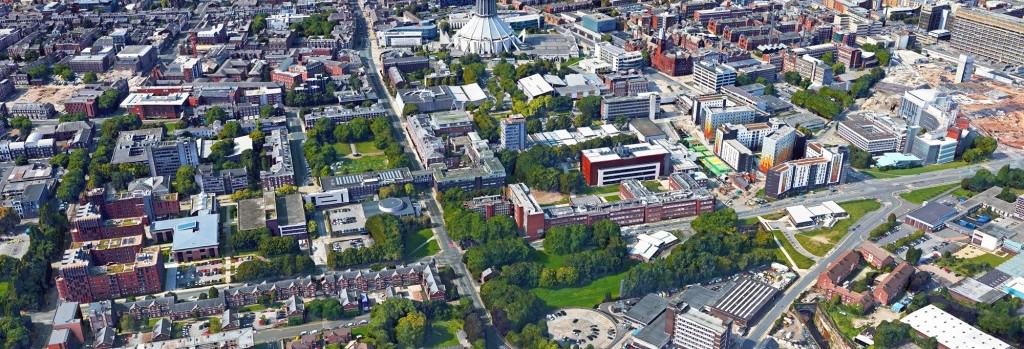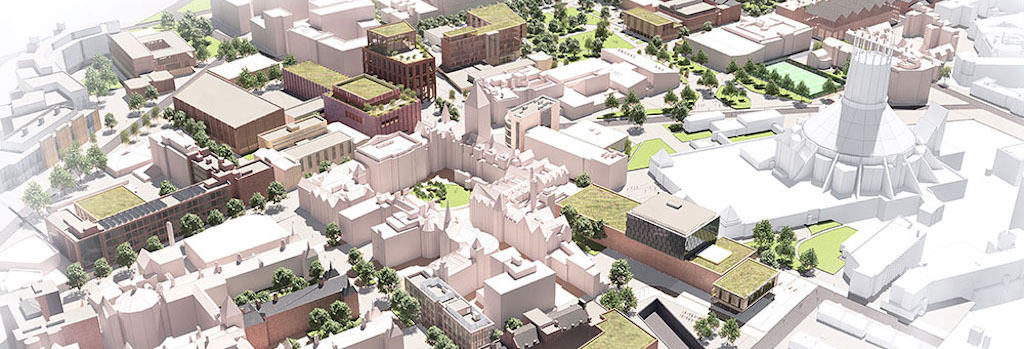
Taking a closer look at Liverpool
Are green spaces really valued?
The protection of urban green spaces has long been a key principle of the UK planning system, with local plans identifying green and open spaces that are to be protected from development.
It’s why development proposals that would result in the loss of open space must thoroughly justify that the space is no longer needed and that the benefits outweigh the loss. Where space is lost, developers must compensate for that loss through on-site provision, financial contributions, or usually, a combination of the two.
And yet, in the past it has felt like open spaces were undervalued, put off in favour of economic growth. Too often, on-site provision comprised the leftover parcels of land not viable for anything else.
But green spaces in our towns and cities should be more than an afterthought.
A change in priorities?
One of the unexpected impacts of the Government-enforced lockdowns over the past 18 months has been to give us all a stark reminder about how important our local green and shared open spaces are.
When our world shrank, our local park or town square became a place to escape to and one of the few places we were able to congregate. Turns out, when we could only leave home once a day, we often found ourselves gravitating towards it.
What is it about open spaces that we are drawn to?
The health & wellbeing benefits of public open spaces
The physical health benefits
Regular exercise in green spaces improves our health in a wide range of ways, including reducing our risk of heart disease, respiratory problems and type-2 diabetes. Parks and open spaces provide the perfect place to exercise and can be an attractive (and active) option for people to get from A to B away from busy roads and air pollution, so instilling healthier habits.
The mental health benefits
Research shows that spending two hours each week in nature improves our wellbeing, providing respite from the busyness and pressures of daily life. Open space can alleviate stress, improve our capacity to be productive, help to restore mental fatigue and improve our mood.
The community benefits
A community with a public open space on its doorstep has a place to congregate, socialise, put on events, and feel connected. Public open spaces bring everyone together; whether or not you have a private garden, the park is for everyone.
The environmental benefits
Beyond personal health benefits, cities benefit hugely from the presence of green spaces. Greening our cities helps to keep us cool. Even in the UK we’ve experienced unbearable heat waves that are exacerbated by the urban heat island effect.
And, whilst installing air conditioning might be one way to deal with heat waves, it will only add to the problem through increasing carbon emissions. Far better to flood our cities with plants that can help keep us cool. Research has found that on a sunny day, a single healthy tree can have the cooling power of more than ten air-conditioning units.
How Liverpool is making its mark
The city council
Greening up the city is high on Liverpool City Council’s agenda. Its Ten Streets Strategic Regeneration Framework (SRF) seeks to create a series of new public spaces which it states will be ‘places to breathe, unwind and imagine, places for ideas to germinate and coalesce and where chance encounters spark new creative collaborations.’
It’s an attractive vision, and one which will deliver huge health and wellbeing benefits if it can be realised.
Now, landscape architect LDA Design is helping the council to take this vision one step further through a new public realm strategy, seeking to reflect the aims of the various SRFs in place around the city centre, and provide detailed guidance for developers in the city. We look forward to seeing this in draft in due course.
Additionally, emerging policies in the draft Local Plan translate these ambitions into clear and enforceable planning policies. For example, draft Policy GI 8 sets clear guidance for developers to ensure new planting in developments is not forgotten, whilst GI 10 requires new developments to incorporate or enhance green infrastructure.
In these two ways, the council is cementing its commitment to delivering sociable open space and green infrastructure on the ground.

The University of Liverpool
We’ve been working with the University of Liverpool (UoL) for five years. Our early work was to support them, in partnership with Planit IE and FCB Studios, with the preparation of its Masterplan Estate Strategy 2026+. It sets out the university’s long-term vision for the campus to become, amongst other things, ‘a place packed with outdoor opportunities to come together and relax, enhancing a sense of community.’
A shift in perspective since the pandemic has helped galvanise its focus for future redevelopment: they’re now boldly championing and establishing green spaces across the campus, and recognise the wider health benefits to the university community as a whole.
The way people use campuses has changed, so, rather than focusing all its investment on building improvements, UoL is making steps towards valuing and improving its existing open spaces on campus. A new science building, for example, only benefits a small part of the campus community. Public green spaces, on the other hand, have far reaching benefits – not only on the whole staff and student body, but the wider community too, 24 hours a day.
Its vision to become a ‘1,000 tree campus’ – boosting the number of trees on campus from around 700 to 1,000 – is one example of how committed they are to this goal. We have worked with UoL to make headway with this by incorporating a new landscaped park into the hybrid planning application for the school of architecture . This will provide a new public open space, paving the way for wider open space ambitions and providing a space for future landscaping requirements from other capital projects.
Ambitious masterplans are key to delivering on values
Whilst planning policies have always played a key role in making sure our green spaces are not forgotten, the delivery of green spaces can still sometimes feel like an afterthought.
That’s where masterplans can be instrumental: they give green spaces the priority and value that they deserve.
They provide a framework – and therefore a sense of cohesion – to the numerous phases of development that will take place over time. They also ensure that carefully thought-out values and priorities remain at the forefront of developers’ minds, and influence the formation of their development proposals. Together with planning policies, masterplans help to deliver quality developments.
A masterplan can help improve health for all
So, how can we build greener, healthier cities?
No doubt in a myriad of ways. But developing ambitious masterplans that elevate the importance of shared open, sociable space, and achieve consensus and buy-in across the sectors is certainly key.
By providing clear guidance and a vision that everyone wants to be part of, these policies, strategies and masterplans in Liverpool will help to boost the amount of green space in the city, and in doing so, deliver huge physical and mental health benefits across the whole of Liverpool’s population. Not only that but the delivery of high quality public realm will boost investor confidence and accelerate the city’s renaissance. And leveraging the best assets of a development to benefit the wider good must be more important now than ever.
Together, the University of Liverpool and the city council are showing that their green spaces are more than an afterthought. They are proactively working towards a greener, healthier city of Liverpool and we are excited about what the future holds for Liverpool.